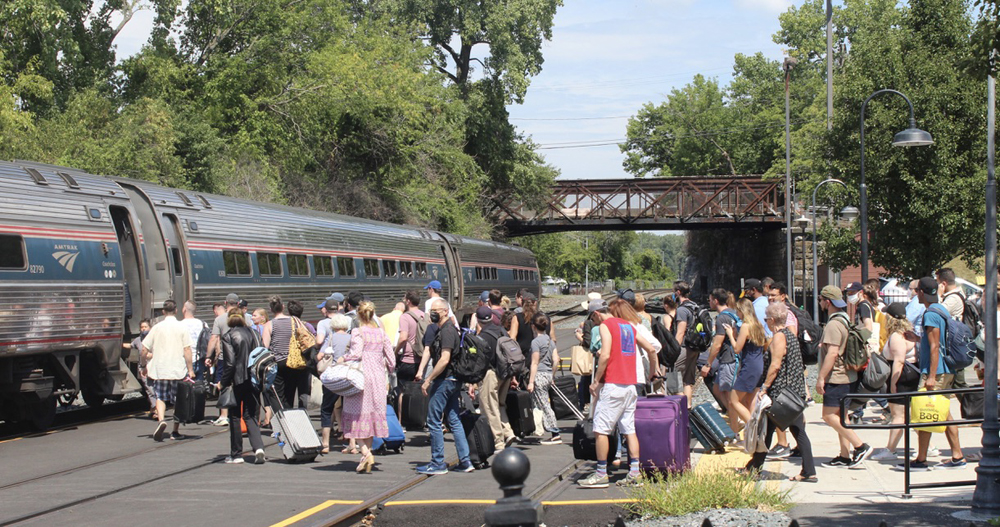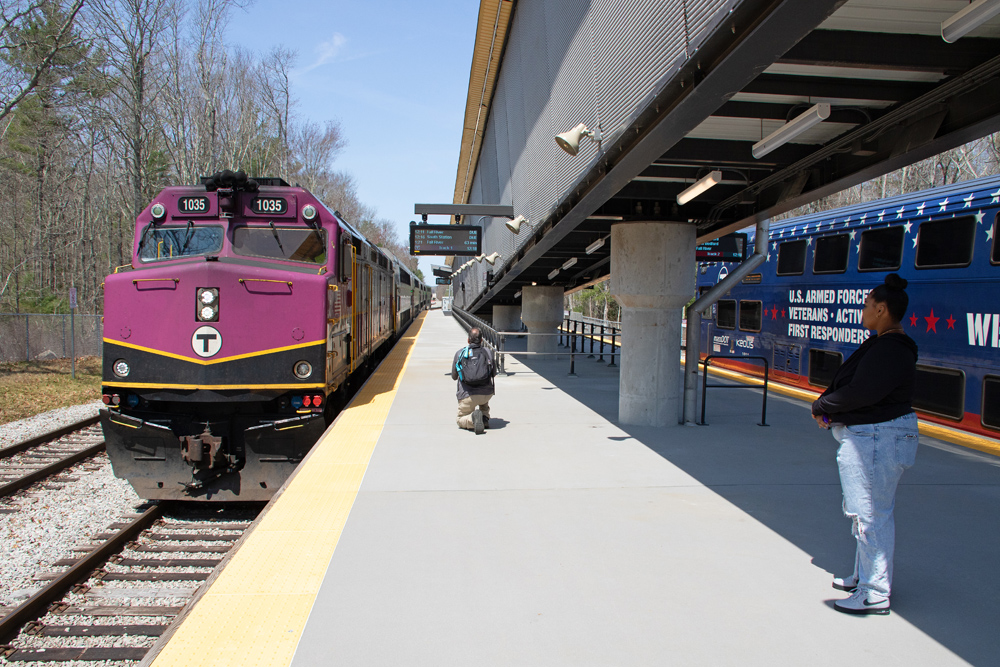
SAN CLEMENTE, Calif. — Use of some 500,000 cubic yards of sand as a buffer has been added to the Orange County Transportation Authority’s plans to protect the Surf Line through San Clemente, the Orange County Register reports.
The route used by Metrolink commuter trains, Amtrak’s Pacific Surfliners, and BNSF freight traffic has been plagued by closures because of a series of landslides in the San Clemente area. The OCTA has built added rip-rap, large boulders to prevent erosion, or temporary restraining walls at slide sites; the latter method most recently addressed a slide at Mariposa Point that led to a two-month closure that ended in March [see “Full passenger service through San Clemente, Calif., to resume …,” Trains News Wire, March 19, 2024].
The agency, which owns the rail line in Orange County, also has been working on a Coastal Rail Resiliency study; the initial version of the proposal has included a half-mile-long wall, a half-mile of additional rip-rap, and three-quarters of a mile of revetment, a facing material that would reinforce bluffs. But San Clemente officials and residents have preferred more use of sand because of concerns over how some of those measures would look [see “Orange County agency considers half-mile wall …,” News Wire, March 14, 2024].
In a recent meeting of a state legislative subcommittee concerned with the LOSSAN rail corridor — the San Luis Obispo-San Diego rail route served by the Surfliners — OCTA CEO Darrell E. Johnson said walls, rip-rap, and sand were part of a “three-pronged approach” for the rail line, the Register reports, and outlined the projected costs: $183 million to $195 million for up to 84,000 tons of rock and the catchment walls, and $64 million to $145 million for the sand. Questions of funding and where the sand would be obtained remain, since the plan is still in its early phases and has yet to be approved.
The agency also discussed the sand element of its plans in a recent press release. More on the resiliency study is available here.
Upcoming meetings to further address the issue include a Monday meeting (10:30 a.m.) of the OCTA’s Regional Transportation Planning Commission; Monday at 10:30 a.m.; the OCTA Board of Directors meeting on May 13, and an OCTA public listening session on May 30 at San Clemente City Hall.














Build on (or with) solid rock, not sinking sand.
Sand? Maybe I’m missing something here. It seems to me that the problems that have occured on this line is due to landslides not ocean flooding. How will sand help when these landslides have been caused by heavy rainfall?
They should look at what the British did with the Dalish sea wall area….that is the only solution to fix the problems around San Clemente and elsewhere, and it would be a lot less expensive than moving the line inland as well.
I suspect the sand portion of the proposal will be dropped. Sand has become a shortage commodity worldwide and the subject of environmental constraints and use of it would be a barrier to environmental approval of the final plan.
Waves will just wash away the sand. Certainly the locals would like to have more beach but past efforts along the same lines in other locations haven’t worked for long. But in our modern world appearances are fsr more important than reality.